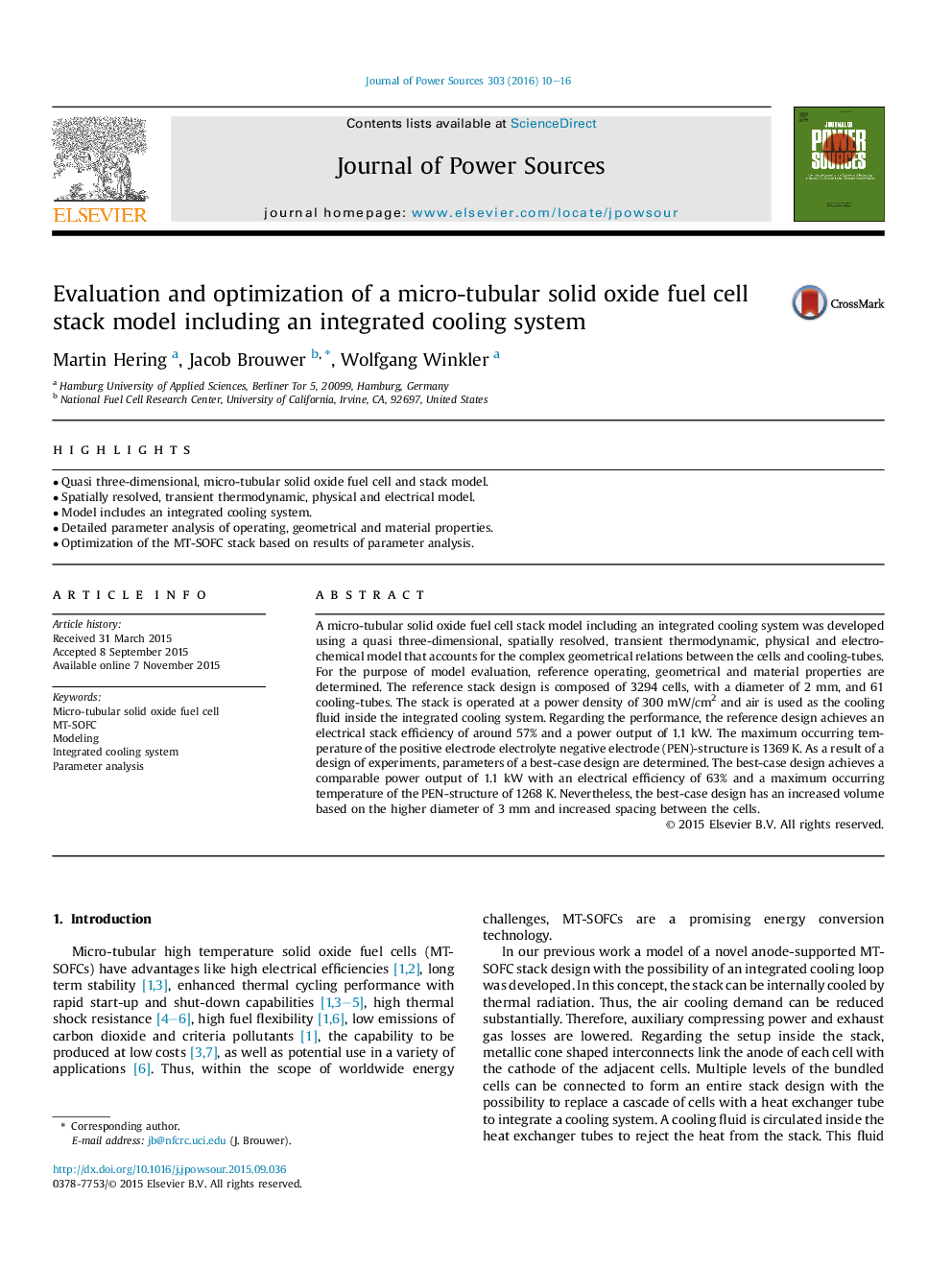| Article ID | Journal | Published Year | Pages | File Type |
|---|---|---|---|---|
| 1285716 | Journal of Power Sources | 2016 | 7 Pages |
•Quasi three-dimensional, micro-tubular solid oxide fuel cell and stack model.•Spatially resolved, transient thermodynamic, physical and electrical model.•Model includes an integrated cooling system.•Detailed parameter analysis of operating, geometrical and material properties.•Optimization of the MT-SOFC stack based on results of parameter analysis.
A micro-tubular solid oxide fuel cell stack model including an integrated cooling system was developed using a quasi three-dimensional, spatially resolved, transient thermodynamic, physical and electrochemical model that accounts for the complex geometrical relations between the cells and cooling-tubes. For the purpose of model evaluation, reference operating, geometrical and material properties are determined. The reference stack design is composed of 3294 cells, with a diameter of 2 mm, and 61 cooling-tubes. The stack is operated at a power density of 300 mW/cm2 and air is used as the cooling fluid inside the integrated cooling system. Regarding the performance, the reference design achieves an electrical stack efficiency of around 57% and a power output of 1.1 kW. The maximum occurring temperature of the positive electrode electrolyte negative electrode (PEN)-structure is 1369 K. As a result of a design of experiments, parameters of a best-case design are determined. The best-case design achieves a comparable power output of 1.1 kW with an electrical efficiency of 63% and a maximum occurring temperature of the PEN-structure of 1268 K. Nevertheless, the best-case design has an increased volume based on the higher diameter of 3 mm and increased spacing between the cells.
